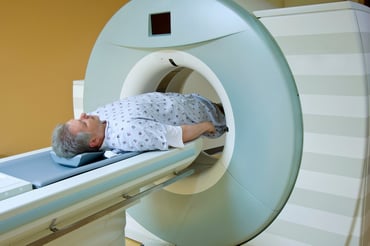
PSA stands for prostate-specific antigen, a protein produced by all types of cells in the prostate gland – non-cancerous and cancerous.
If you’re over 50 you should be familiar with PSA testing, a simple blood test to determine if there is an elevated level of PSA in a man’s blood. If you have a PSA level between 4 and 10 ng/ml your doctor may want to look further into the cause of the increased PSA level.
Until recently a high PSA resulted in a prostate biopsy to determine if cancer is present. Studies have found that unnecessary biopsies can be avoided by evaluating the percentage of free PSA compared to the amount of protein-bound PSA found in the blood.
Related Read: When Should You Get a Prostate Biopsy?
What Can Increase the PSA Level Other Than Cancer?
An elevated PSA alone isn’t an automatic indicator of cancer. That’s because levels can increase from a variety of factors including:
- BPH: Benign Prostate Hyperplasia is also referred to as an enlarged prostate. This non-cancerous condition is a known cause of an elevated PSA level and can be treated by a doctor.
- Prostatitis: This is an infection of the prostate gland which can increase PSA levels. This condition should be treated by a doctor.
- Ejaculation: This can make the PSA go up for a short time afterward. It may be helpful to avoid ejaculation for a day or two before taking a PSA test to help rule out this cause.
- Age: PSA levels normally go up slowly as you get older.
- Digital Rectal Exams: The digital rectal exam performed by the doctor during prostate cancer screening can cause an elevated PSA in some men because of the pressure put on the prostate. For this reason it’s usually best to have your PSA blood test done before your exam.
- Hormone Supplements: Taking male hormones like testosterone (or other medicines that raise testosterone levels) may cause a rise in PSA.
- Riding a bicycle: Some studies have suggested that cycling may raise PSA levels for a short time (possibly because the seat puts pressure on the prostate), although not all studies have found this.
If your PSA test results come back above normal your doctor may ask you questions about your activities and investigate further to see if BPH or prostatitis could be the cause of an increased PSA. They may also look closer at the free PSA levels.
What is a Free PSA and Why Does it Matter?
The standard PSA number represents all PSA found in the blood that includes:
- Protein-bound PSA
- Free PSA, or PSA that is not bound to other proteins in the blood
The ratio of free PSA to total PSA has recently become a more known indicator of the likelihood that prostate cancer is present.
If a man’s PSA level is considered “elevated” (between 4 ng/ml and 10 ng/ml) the free PSA test can be helpful in determining if a biopsy should be performed.
- If the ratio of free to protein-bound PSA is 25% or more, it’s more likely that a non-cancerous prostate cancer condition is the cause of the increased PSA levels.
- If a PSA test comes back “elevated” but the free PSA ratio to protein-bound PSA is less than 10%, a biopsy is more likely to be recommended.
Because approximately 75% of men with an elevated PSA do not have prostate cancer many men can avoid the uncomfortable procedure and have their non-cancerous prostate cancer condition treated.
Do All Men Have Free PSA Testing as Part of their Prostate Cancer Screening?
Most men at age 50 start a standard prostate cancer screening plan. Today this includes a digital rectal exam (DRE) and a regular PSA test.
The exam will help your doctor understand if there is anything abnormal about the size of the prostate and if s/he can detect anything unusual when touching it.
The PSA test will determine if you have a higher than normal level of PSA in your blood. If this test comes back with a result between 4 ng/ml and 10 ng/ml a free PSA test could be a helpful next step.
Other Tests Used to Diagnose Prostate Cancer Prior to Requiring a Biopsy
There are a few tests that can be run to see if they agree that there are signs of cancer before requiring a biopsy.
Next Steps With an Elevated PSA
If your PSA test comes back above normal, don’t panic. There are other tests that can be run to determine if a biopsy is needed such as:
Prostate Health Index (PHI): This FDA approved blood test helps determine the probability of detecting prostate cancer with a biopsy.
The 4Kscore test: This blood test combines the results of total PSA, free PSA, protein-bound PSA, and human kallikrein 2 (hK2), a tumor marker for prostate cancer.
If one or more of these come back with an indication that prostate cancer may be the cause of the elevated levels of PSA, a prostate biopsy is likely the best next step. From there the doctors can determine if cancer is present. If you receive a prostate cancer diagnosis, it’s best to consult with an oncologist, a cancer specialist, who can tell you if treatment is necessary right away or if you can watch and wait before starting a prostate treatment program.
If you or a loved one has received a prostate cancer diagnosis, take some time to find the right treatment plan for you. Request a consultation with one of our Georgia prostate cancer specialists located throughout the Atlanta area.



